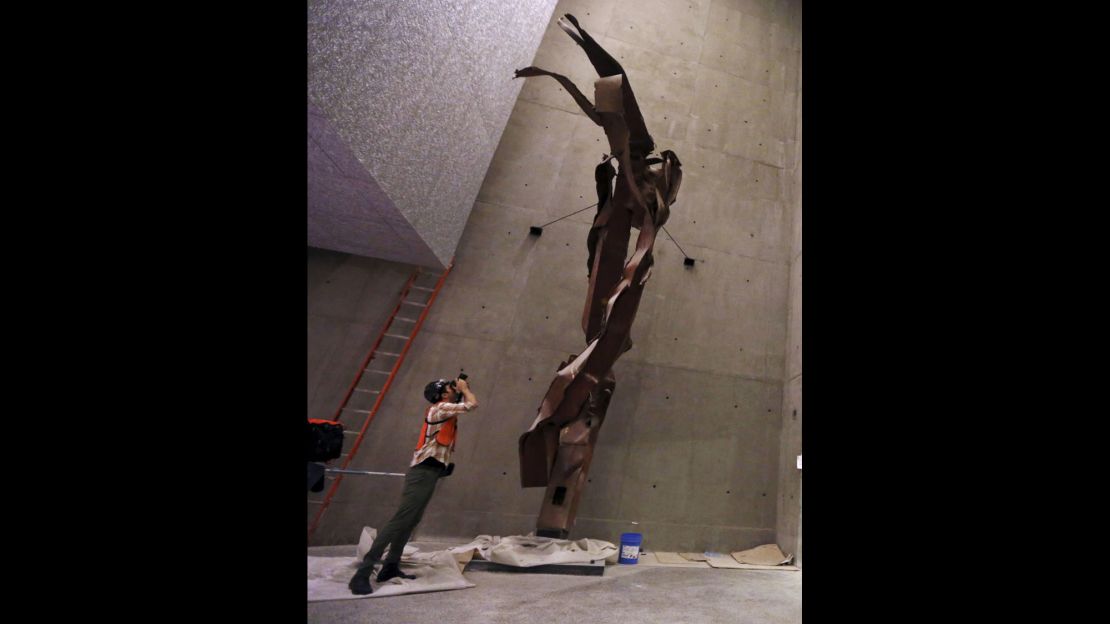Story highlights
Some people see an image in a piece of 9-11 wreckage at a yet-to-open museum
It is being called the "Angel of 9-11"
"People often find meaning in tragedy," says museum spokesman
Eerie, haunted, sad.
Those words are being used in connection with what some workers at the 9/11 Memorial Museum in Lower Manhattan have called the “Angel of 9-11” – an image some see in wreckage salvaged from the World Trade Center’s North Tower.
Exposure to the elements over more than a decade sculpted what many viewers say is a human visage.
The contorted beams were originally part of the first tower that was hit during the terrorist attacks early September 11, 2001. They have since been moved to the nearby National September 11 Memorial and Museum.

Though the museum does not open to the public until spring 2014, pictures of the 30-foot structure have elicited what some, in tweets, called “stunned” reactions. Some posted that it touched their hearts and that they believe it to be sacred.
Others consider it a common type of optical illusion. But their skepticism was tempered with thoughtfulness.
Michael Shermer, publisher of Skeptical Inquirer Magazine and author of the book “The Believing Brain: From Ghosts and Gods to Politics and Conspiracies,” is among the skeptics.
He cited a phenomenon called “patternicity” – the human tendency to find meaningful patterns in meaningless noise.
And he credited the brain’s software for allowing to see a face on the metal. Anything that looks like it has two eyes and a mouth “stimulates the area that recognizes faces,” he told CNN in a telephone interview, citing such common examples as the man in the moon or a face in a cloud.
A spokesman for the museum said he is aware of the symbolism of what some have detected. “People often find meaning in tragedy, particularly in one as widely felt as the September 11 attacks,” said Anthony Guido, communications manager for the museum, in a written statement. “This impact steel is historically important to include in the museum as it will help tell the story of 9/11 to visitors from around the world.”
And the reactions of some of the workers add to that story.
